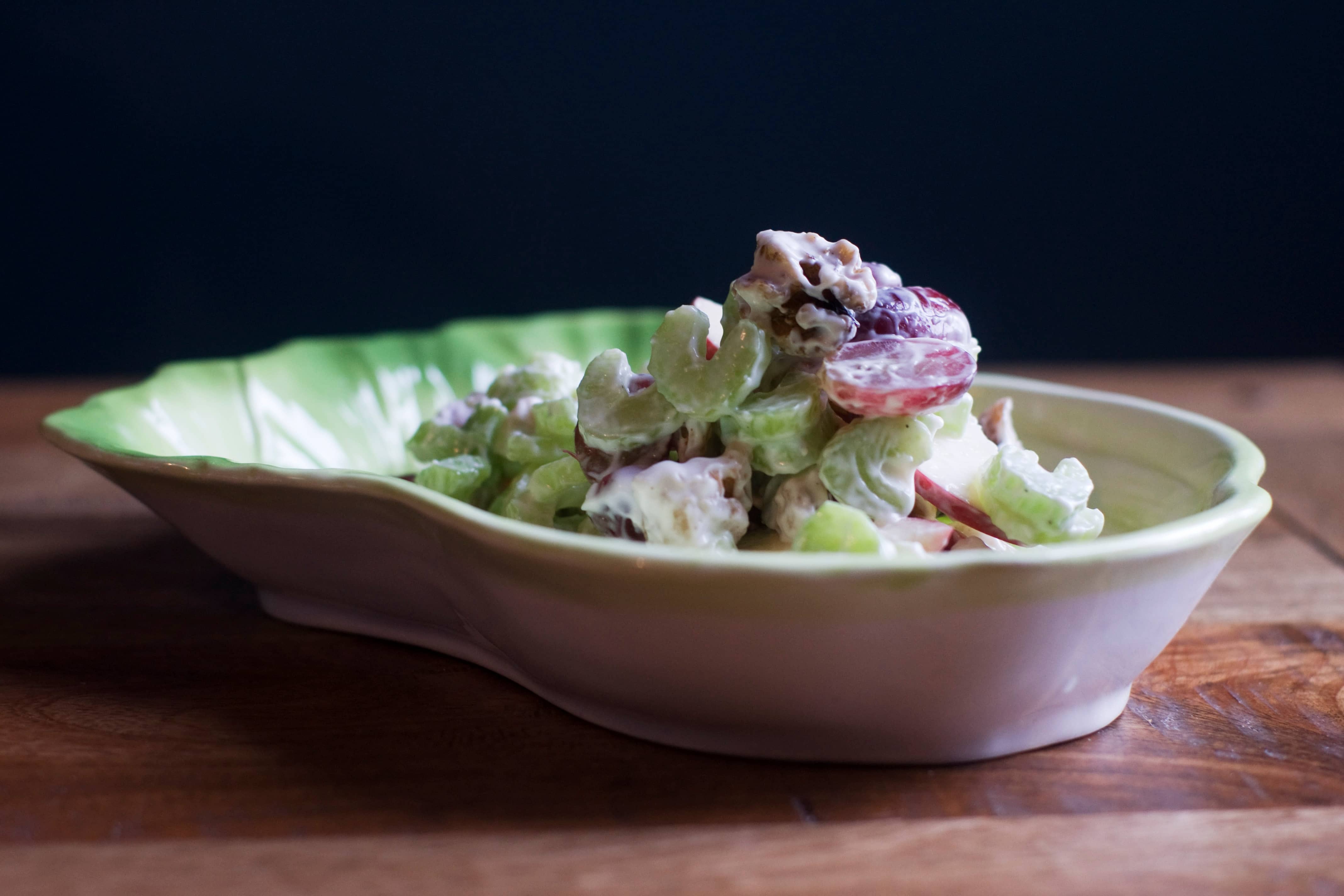You don’t see Waldorf salad so much nowadays. It’s a simple dish: raw celery, apple, grapes and walnuts, tossed in a mayonnaise-based dressing. Although you might still find it packaged in the bigger supermarkets, it’s fallen off dinner tables and restaurant menus alike. We wrinkle our noses at the prospect of combining fresh fruit and mayonnaise: the combination always makes me mentally place the Waldorf salad in the 70s, alongside big platters of dressed salmon, covered in wafer-thin cucumber scales, and a host of other mayonnaise-coated, tricky-to-identify bowls purporting to be salads, possibly involving tinned mandarin oranges.
But it’s actually much older than it feels: it was invented in 1896 for a charity ball being held at the Waldorf-Astoria hotel in New York. Peculiarly, it wasn’t one of the chefs, but the maître d’ of the hotel, Oscar Tschirky, who came up with the dish. But then Tschirky has form for creating dishes which became household names: he is also credited by some as coming up with thousand island dressing and eggs benedict. The salad’s name feels like it should point towards the walnuts which now form an integral part of the dish, but of course it is simply the name of its birthplace, and walnuts weren’t even part of the salad until 1928.
Waldorf salad has been the butt of culinary jokes for over 40 years, and is even the subject (and title) of a Fawlty Towers episode. When a hotel guest power-orders a waldorf salad, which doesn’t feature on the establishment’s menu, Basil falters. He tries to hide his ignorance and fob the guest off by explaining that they’re fresh ‘out of Waldorfs’. Sadly for Basil, this doesn’t fly; nor does his attempt to sell the guests a ‘Ritz’ salad, made up of apples, grapefruit and potatoes, coated in mayo. Although we’re supposed to laugh at Basil’s incompetence, the idea that his combination sounds as unlikely and (un)appetising as the Waldorf variety is not terribly far-fetched. But the salad is a classic for a reason: it really does work, and the peculiar combination is actually a clever balance of sweet and savoury, crisp and yielding. All it needs is a little judicious seasoning and fresh ingredients.
Here I’ve gone textbook: no twists, no fancying up. You can turn this into a delightful lunch with some grilled chicken and boiled new potatoes tossed in a little butter, but the salad will happily accompany a surprisingly large array of dishes – try it as part of a barbecue, or with whole baked fish, or just add torn lettuce and serve alongside really great bread, and maybe some strong cheddar.
The peculiar combination is actually a clever balance of sweet and savoury

Waldorf salad
Makes: Serves four as a generous side salad
Takes: 5 minutes
Bakes: No time at all
A small bunch of grapes (about 100g)
1 crisp eating apple
4 ribs celery
75g Walnuts
½ tablespoon lemon juice
1 tablespoon extra virgin olive oil
3 tablespoons mayonnaise
- Put the walnuts in a pan and heat until just toasted: as soon as you can smell them they are ready. Immediately transfer to a chopping board, and roughly chop.
- Cut the celery into ½ inch slices, and halve the grapes. Remove the core from the apple, and slice as thingly as you can.
- Combine the lemon juice, oil, and mayonnaise, along with a generous grinding of black pepper and salt to season. Toss the celery, grapes, apple and walnuts in the mayonnaise, spoon into a bowl, and serve.







Comments